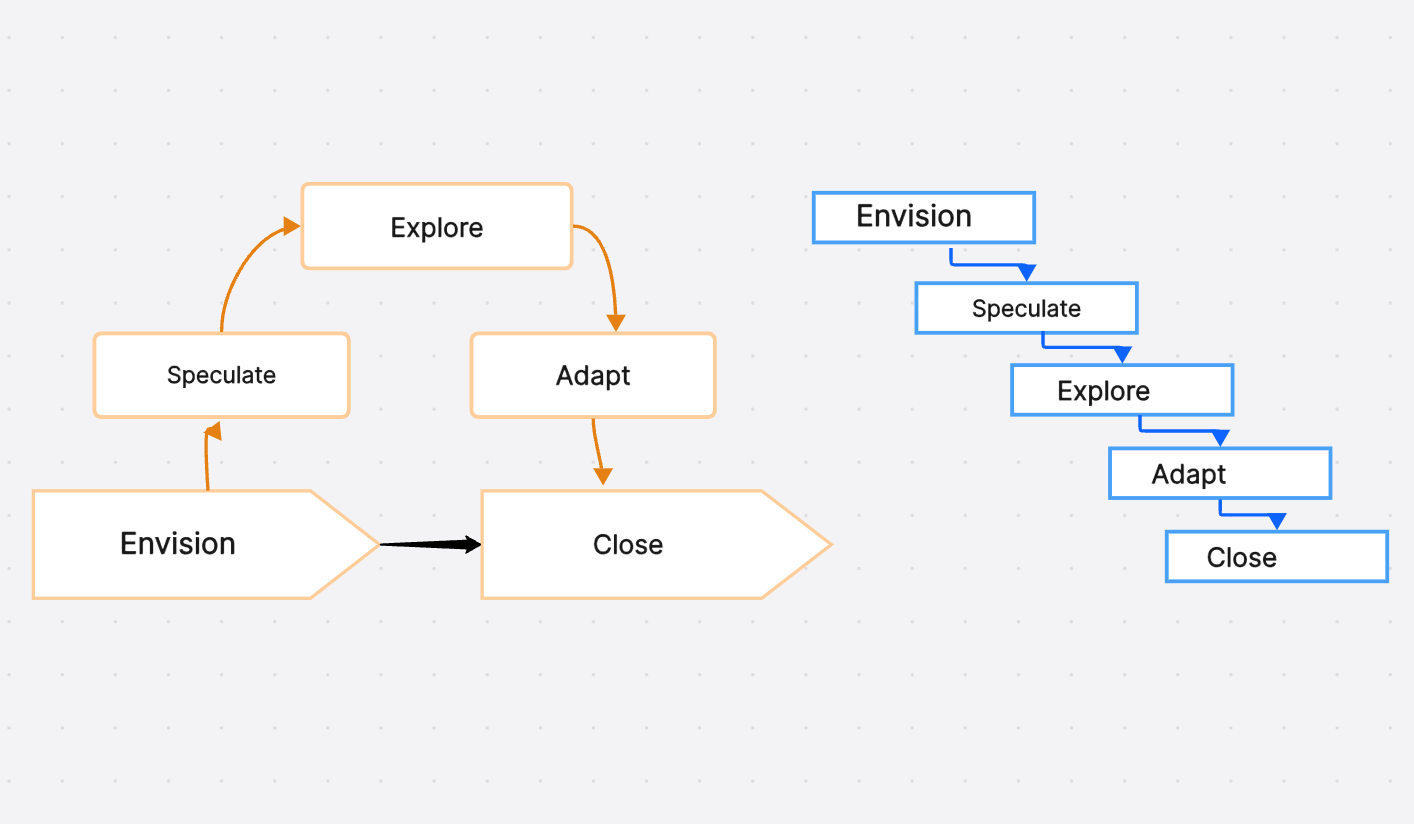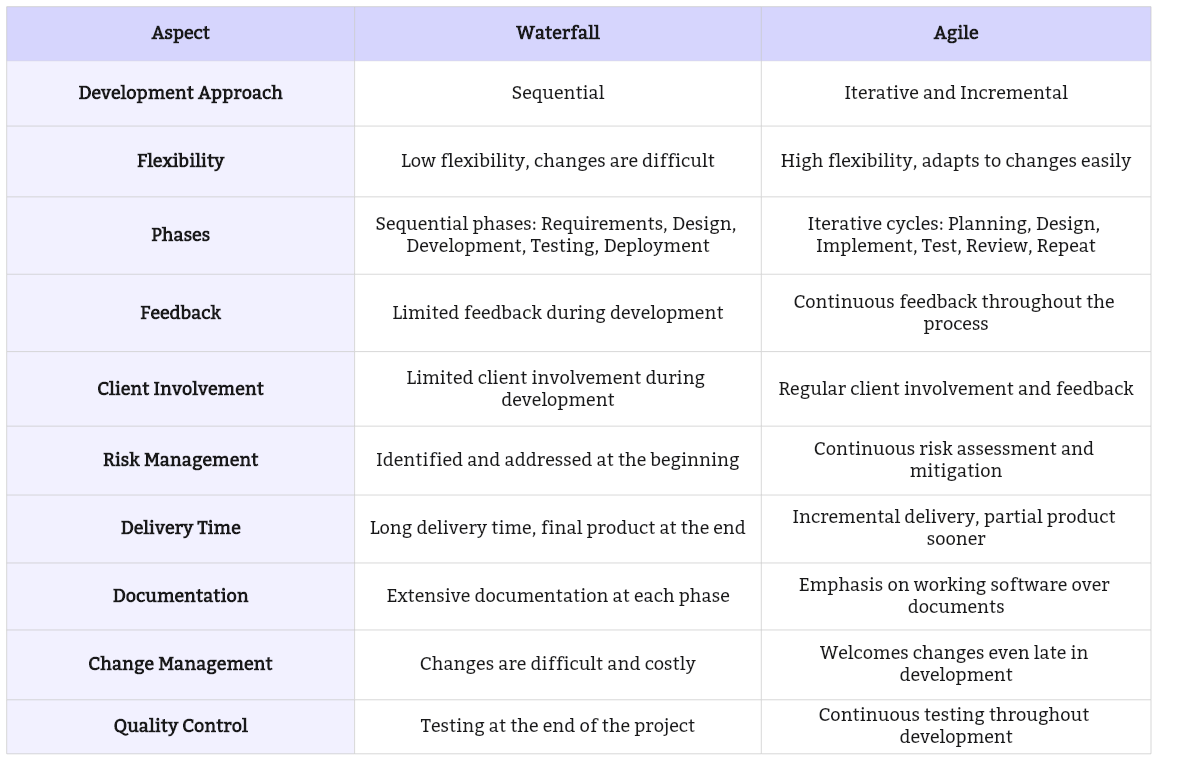In the dynamic world of project management, Agile and Waterfall methodologies stand as two dominant paradigms. Each embodies a distinct approach to orchestrating, executing, and steering projects towards their successful completion. This comprehensive guide aims to shed light on these prevalent methodologies by dissecting their core principles, outlining their respective advantages and drawbacks, and juxtaposing their key differences. Whether you're a seasoned project manager or a novice stepping into this field, understanding these methodologies can significantly enhance your project execution strategy.
Part 1. What Is Agile?
Agile is a project management methodology that champions adaptability, teamwork, customer gratification, and superior outcomes. It deconstructs colossal projects into smaller, more manageable tasks known as "sprints." These sprints are not marathon stretches of work but rather short, focused iterations. This approach allows for continuous refinement and improvement throughout the project lifecycle, ensuring that each sprint delivers value and propels the project towards its ultimate goal. Agile's inherent flexibility enables teams to respond swiftly to changes or new information, making it an ideal choice in rapidly evolving business environments.
Part 2. Pros and Cons of Agile
Pros:
1. Adaptability: Agile's inherent flexibility allows for alterations in the project scope at any stage, accommodating evolving requirements and unexpected changes.
2. Customer Delight: The methodology's emphasis on regular feedback loops ensures that the end product aligns with customer expectations, fostering satisfaction and loyalty.
3. Superior Outcomes: The frequent testing and iterative development intrinsic to Agile helps maintain high quality throughout the project lifecycle, resulting in a final product that is robust, reliable, and fit-for-purpose.
Cons:
1. Active Engagement: Agile methodology necessitates the active participation of all team members for its success. It demands a high level of commitment, communication, and collaboration from everyone involved.
2. Ambiguous Timelines: The very flexibility that is Agile's strength can also lead to uncertain delivery dates. As the scope of the project can change with each sprint based on feedback and evolving requirements, it can sometimes be challenging to predict exact completion dates.
Part 3. What Is Waterfall?
Waterfall is a linear and sequential project management approach where each stage of the project flows logically from the previous one, much like a cascading waterfall. This methodology follows a rigid structure where each phase - from conception to initiation, analysis, design, construction, testing, deployment and maintenance - is completed in its entirety before moving on to the next. There's no room for revisiting or revising once a phase is complete, making it crucial to get each step right the first time.
Part 4. Pros and Cons of Waterfall Project Management
Pros:
- Defined Structure: The Waterfall methodology provides a clear, step-by-step structure where each phase has specific deliverables. This well-defined framework simplifies project management and ensures that every team member understands their role and responsibilities.
- Predictable Timelines: Due to its sequential nature, the Waterfall approach allows for accurate timeline predictions. Each phase is scheduled in advance, providing a clear roadmap of the project's progression.
Cons:
- Rigidity: One of the main drawbacks of the Waterfall methodology is its inflexibility. Once a phase is complete, changes or revisions cannot be easily accommodated, making it less suitable for projects with evolving requirements.
- Late Discovery of Issues: In the Waterfall model, testing occurs late in the project lifecycle. This means that any issues or defects may not surface until much later, potentially leading to costly and time-consuming fixes.
Part 5. What Are the Differences Between Agile and Waterfall?
Agile and Waterfall are two distinct project management methodologies used in software development and other industries. Here are some key differences between Agile and Waterfall:
1. Approach to Planning and Execution:
Waterfall: Follows a linear and sequential approach to project management. Each phase must be completed before moving on to the next.
Agile: Emphasizes an iterative and incremental approach. It divides the project into small parts or iterations, allowing for flexibility and continuous feedback.
2. Flexibility and Changes:
Waterfall: Changes are difficult to implement once the project is underway, and they often require going back to the beginning of the project.
Agile: Welcomes changes, even late in the development process. It is designed to adapt to changing requirements and priorities.
3. Client Involvement:
Waterfall: Client involvement is typically limited to the beginning and end of the project. Clients may not see the product until it is fully developed.
Agile: Encourages regular client involvement throughout the development process, with frequent reviews and feedback sessions.
4. Testing and Quality Assurance:
Waterfall: Testing is typically performed at the end of the development cycle after the product is fully built.
Agile: Testing is integrated throughout the development process, with continuous testing and quality assurance activities in each iteration.
5. Project Documentation:
Waterfall: Emphasizes extensive documentation, including detailed project plans, requirements, and design documents.
Agile: Prioritizes working software over comprehensive documentation. Documentation is often more lightweight and is generated as needed.
6. Risk Management:
Waterfall: Risks are addressed at the beginning of the project, and changes in requirements or scope can introduce significant risks.
Agile: Identifies and addresses risks throughout the project, with the ability to adapt and mitigate risks as they arise.
7. Timeline and Delivery:
Waterfall: The project is delivered at the end of the development cycle.
Agile: Allows for the delivery of a minimum viable product (MVP) at the end of each iteration, enabling the release of functional components earlier in the development process.
8. Team Structure:
Waterfall: Often has a more rigid team structure with specific roles assigned (e.g., analysts, developers, testers).
Agile: Encourages cross-functional teams with individuals capable of performing multiple roles. Team members collaborate closely throughout the project.
9. Customer Satisfaction:
Waterfall: Customer satisfaction is measured at the end of the project when the final product is delivered.
Agile: Constantly seeks customer feedback and aims to ensure satisfaction throughout the development process.
Conclusion
The choice between Agile and Waterfall depends on the specific needs and characteristics of a project. Some projects may benefit from the structured, predictive nature of Waterfall, while others may thrive in the flexible and adaptive environment provided by Agile methodologies. Many organizations also use hybrid approaches that incorporate elements of both methodologies to suit their unique requirements.
However, regardless of your choice of methodology, having an efficient tool like Boardmix can make managing your projects easier with its intuitive interface and wide range of templates designed for effective project management. Try it right now!













